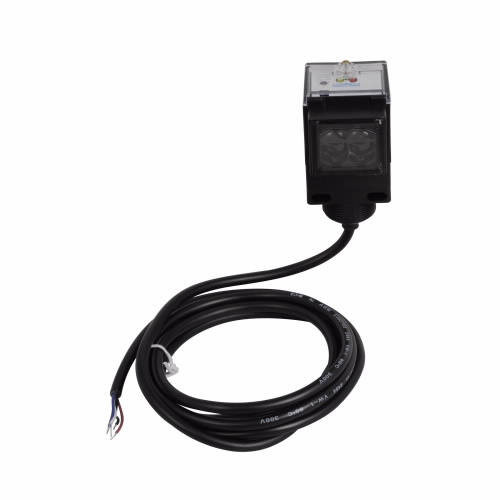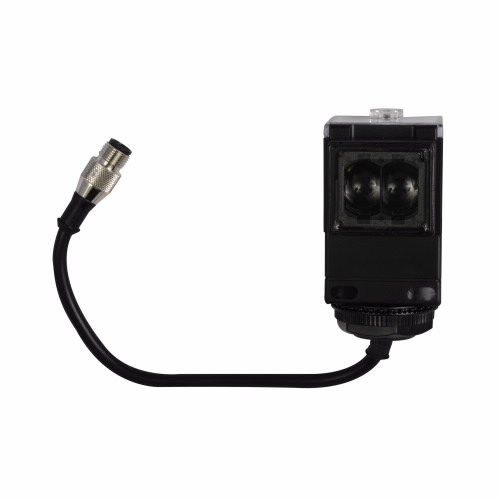Eaton 1350E-8547 photoelectric sensor detects the presence, absence or distance of an object by using light. This sensor is widely used in the manufacturing, packaging, automotive and pharmaceutical industries for object detection, counting and positioning.
Working Mechanism:
- A photoelectric sensor has two parts: an emitter and a receiver.
- The emitter sends a focused light beam, whereas the receiver detects the presence of emitted light.
- In the normal state, the receiver senses continuous light.
- When an object enters, it blocks the light beam, causing the receiver to detect an absence of light.
- This causes the sensor to generate a signal that activates alarms or control machinery.
Features:
- Eaton 1350E-8547 photoelectric sensor features a low-gain indicator for easy alignment.
- It has fully potted construction for use in areas prone to washdown, high shock and vibration.
- This Enhanced 50 Series photoelectric sensor can operate in thru-beam or diffuse reflective mode depending on the fibre optic cable selected.
Compatible Accessories:
Frequently Asked Questions:
Q. How can I improve the performance of my photoelectric sensor?
A.
- To enhance sensor performance, ensure proper alignment between the sensor and the target object.
- Maintain a clear line of sight and adjust sensitivity settings as needed.
Q. How do I prevent false triggers or erratic behaviour in photoelectric sensors?
A. Reduce environmental interference and consider incorporating filtering or debounce algorithms into your control system to eliminate transient signals and increase reliability.
Q. What is the difference between a proximity sensor and a photoelectric sensor?
A. Proximity sensors use electromagnetic fields or capacitance to detect metal objects at a short range. Photoelectric sensors employ light to detect various materials at a longer range but can be affected by environmental factors.
 Change Country
Change Country



